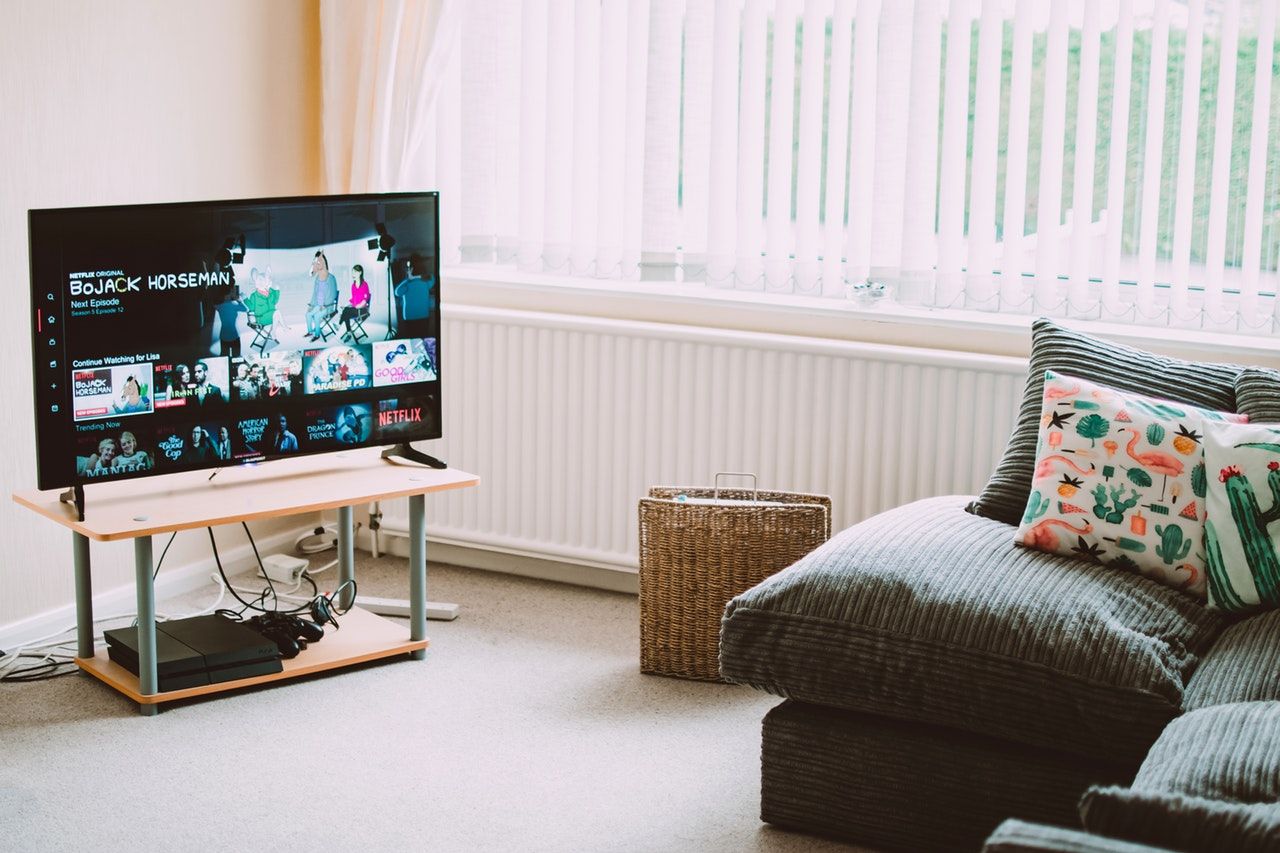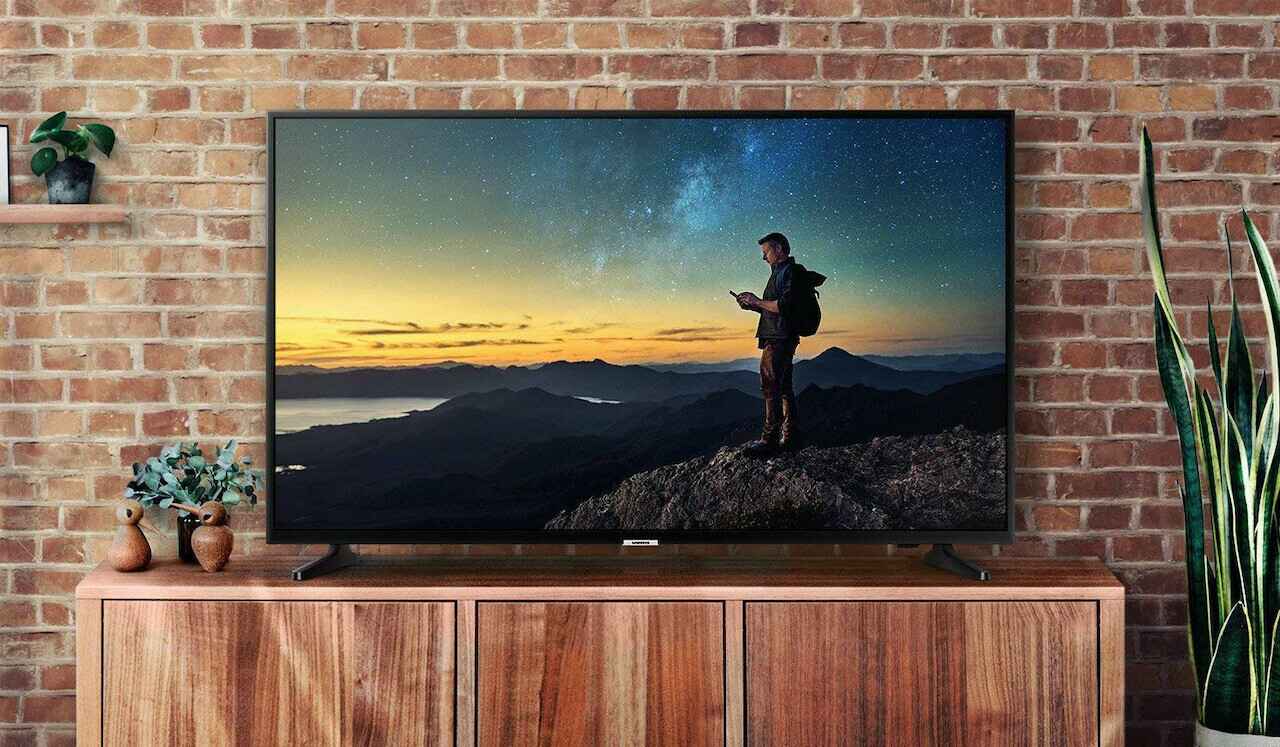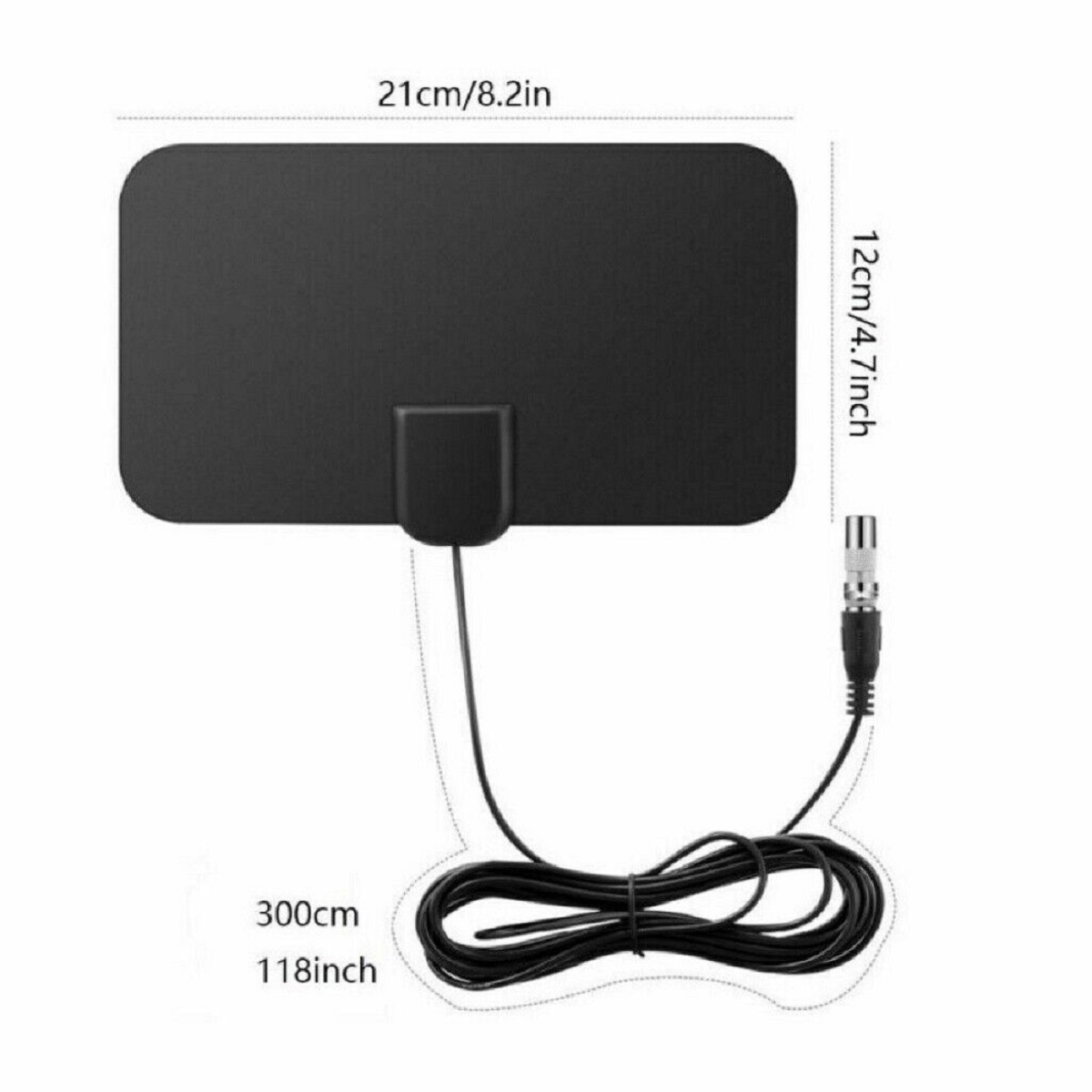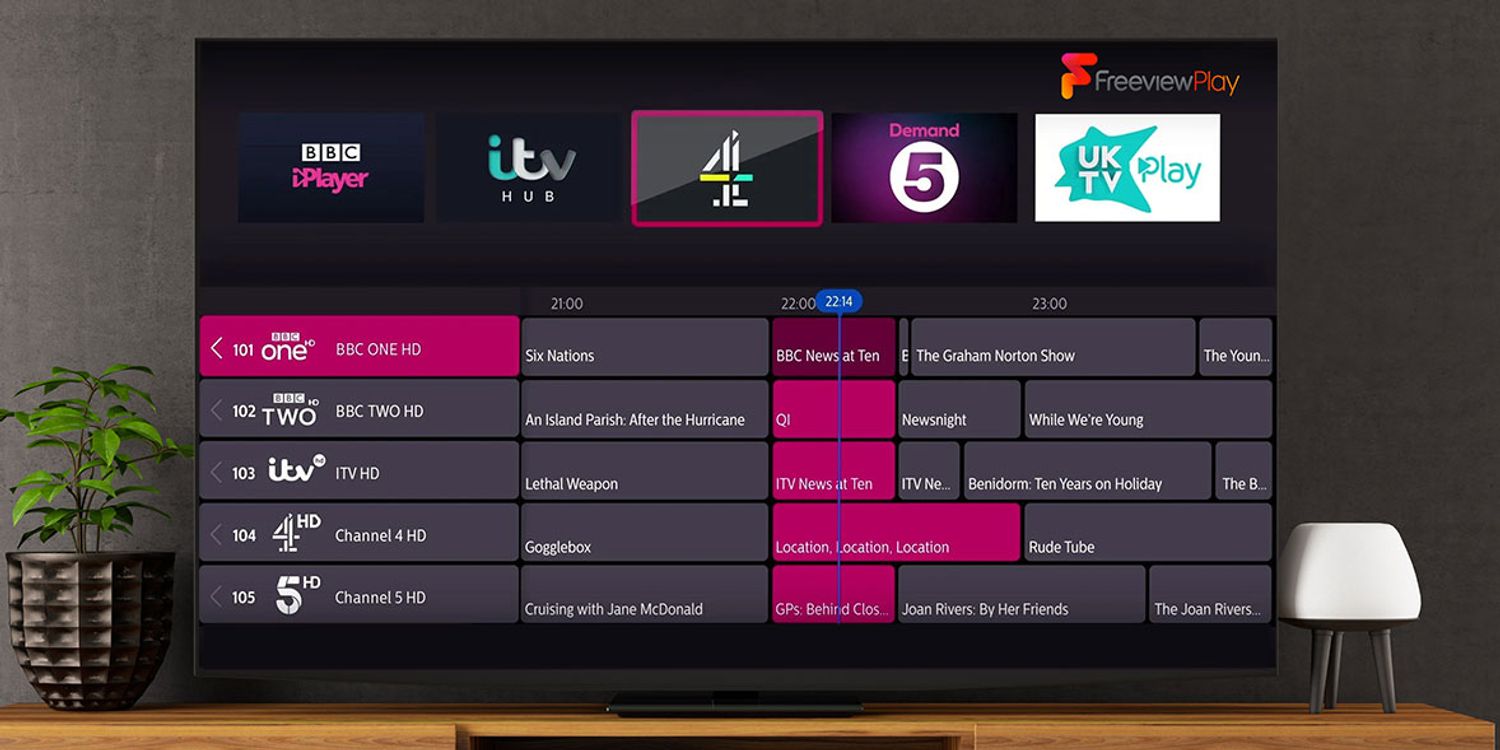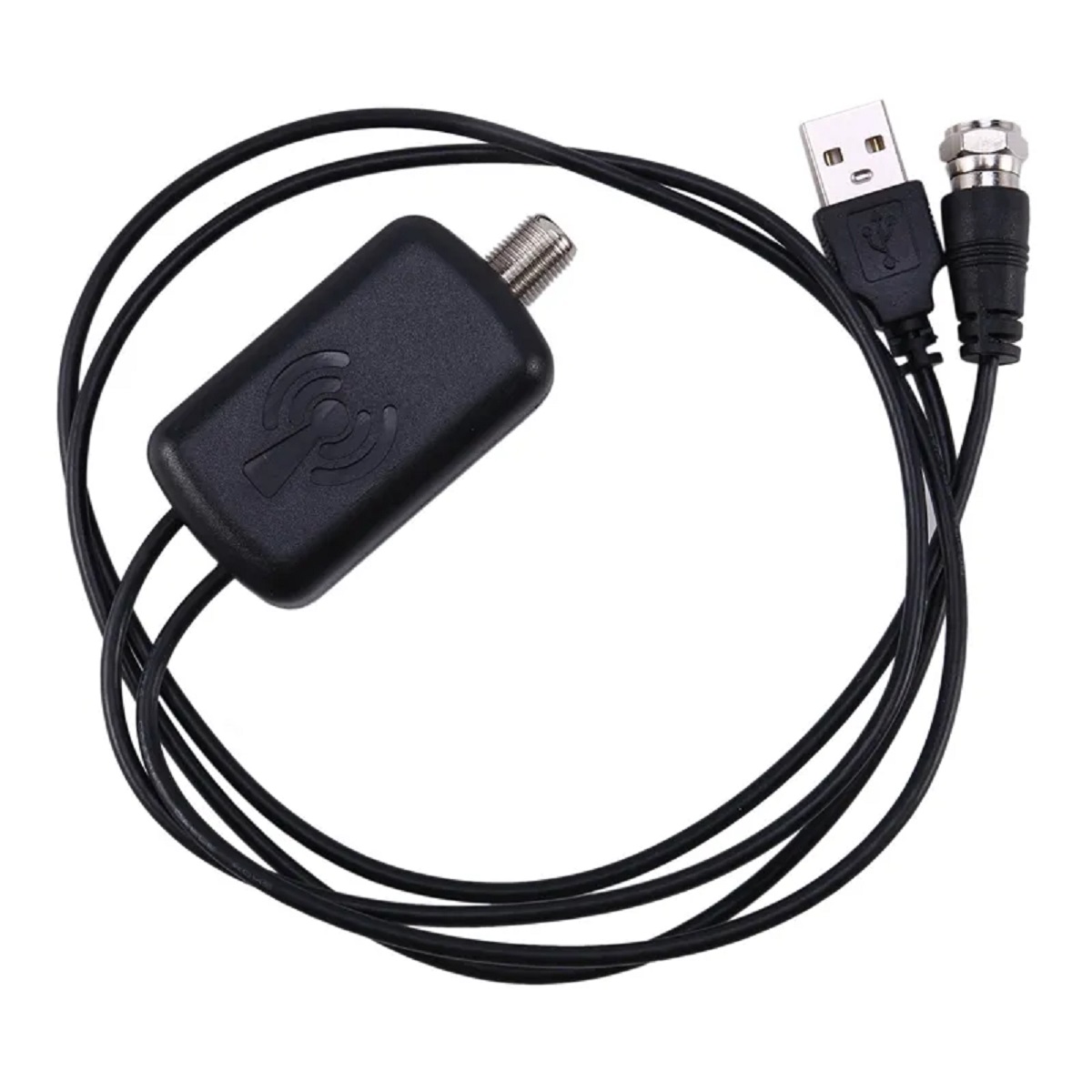Introduction
A smart TV is a television set that is equipped with internet connectivity and offers a wide range of features beyond traditional broadcasting. With a smart TV, you can access online content, stream movies and TV shows, play games, and even browse the web. One of the most popular features of a smart TV is the ability to watch live TV without the need for an aerial or cable connection.
In this article, we will explore the various methods and options available to watch live TV on a smart TV without the need for an aerial. We will discuss streaming services, apps, streaming devices, local network media servers, and over-the-air streaming options.
Gone are the days when viewers were restricted to traditional cable or satellite subscriptions to watch their favorite TV channels. Smart TVs have revolutionized the way we consume media, offering flexibility and convenience like never before.
Now, let’s dive into the different ways you can watch live TV on your smart TV without the need for an aerial.
What is a Smart TV?
A smart TV is a television set that combines the functions of a traditional TV with the capabilities of a computer and internet connectivity. Unlike conventional TVs, smart TVs have built-in Wi-Fi or Ethernet connections, allowing users to access a variety of online content and services.
Smart TVs typically have a user-friendly interface that allows viewers to navigate through apps, streaming services, and web browsers using a remote control or sometimes even voice commands. These TVs are equipped with powerful processors and ample storage to handle multimedia content and provide a seamless user experience.
One of the key features of a smart TV is its ability to connect to the internet. This connectivity opens up a world of possibilities, allowing users to stream videos, listen to music, play games, browse social media, and access various online services directly on their television.
With a smart TV, you can enjoy popular streaming services like Netflix, Hulu, Amazon Prime Video, and many more. Additionally, you can access video-sharing platforms like YouTube and Vimeo, as well as social media platforms like Facebook and Twitter.
Furthermore, smart TVs often come with built-in casting capabilities, allowing you to mirror the screen of your smartphone, tablet, or computer onto the TV without the need for any additional devices or cables. This makes it easy to share photos, videos, and presentations with friends and family on a larger screen.
Overall, a smart TV offers a versatile and interactive viewing experience, combining the best of traditional television with the convenience and functionality of the internet. With its array of features and options, a smart TV has become a popular choice for consumers looking for an all-in-one entertainment solution.
How Does Live TV Work on a Smart TV?
When it comes to watching live TV on a smart TV, there are multiple methods and technologies that come into play. Understanding how live TV works on a smart TV can help you choose the most suitable option for your needs.
1. Internet Streaming Services: One of the most popular ways to watch live TV on a smart TV is through internet streaming services. These services offer live TV channels that can be accessed over the internet. Examples include YouTube TV, Sling TV, Hulu Live, and many more. Users typically subscribe to these services and gain access to a wide range of channels that can be streamed directly on their smart TV.
2. Using Apps on Your Smart TV: Many smart TVs come with pre-installed apps that offer live TV channels. These apps may be specific to certain networks or providers, allowing you to watch live TV shows and events directly on your smart TV. Examples include the apps provided by major networks like ABC, NBC, and CBS.
3. Streaming Devices for Smart TVs: If your smart TV doesn’t have built-in live TV capabilities, you can utilize external streaming devices to watch live TV. Options like Roku, Amazon Fire Stick, and Google Chromecast allow you to connect to various streaming services that offer live TV channels. These devices plug into your TV’s HDMI port and provide access to a wide range of streaming options.
4. IPTV (Internet Protocol Television): IPTV is a technology that allows television signals to be streamed over the internet. It differs from traditional broadcasting methods as it utilizes IP-based networks. Some smart TVs have IPTV capabilities built-in, while others may require the installation of dedicated IPTV apps to access live TV channels.
5. Local Network Media Server: If you have a media server set up on your local network, you can use it to stream live TV to your smart TV. This method involves capturing the TV signal and broadcasting it over your local network. Smart TVs can then access this broadcasted signal and display it on the screen.
6. Over-the-Air Streaming: Finally, some smart TVs have the ability to connect to an antenna and receive over-the-air signals. This allows you to watch live TV channels that are broadcasted in your area without the need for a cable or satellite subscription. This method is particularly useful for accessing local networks and channels.
By understanding the various methods and technologies available, you can choose the most suitable option to watch live TV on your smart TV. Whether it’s streaming services, apps, external devices, IPTV, local network media servers, or over-the-air streaming, the possibilities are vast and cater to a wide range of preferences and needs.
Internet Streaming Services
Internet streaming services have transformed the way we watch live TV on smart TVs. These services provide a vast array of live TV channels that can be accessed over the internet, eliminating the need for traditional cable or satellite subscriptions. Let’s take a closer look at how internet streaming services work and the benefits they offer.
Internet streaming services, such as YouTube TV, Sling TV, Hulu Live, and AT&T TV, are subscription-based platforms that offer live TV channels delivered over the internet. These services negotiate licensing agreements with TV networks and deliver their content through their proprietary apps or websites.
Subscribing to an internet streaming service typically involves selecting a desired package that includes a specific set of channels. You can choose from a variety of channel lineups to fit your preferences and interests. These services offer a wide range of channels, including news networks, sports channels, entertainment channels, and more.
Once subscribed, you can access the streaming service app on your smart TV. Most smart TVs have dedicated apps available for popular streaming services, making it easy to install and navigate through the available channels. You can then stream live TV channels directly on your smart TV, just like you would with traditional cable or satellite TV.
One of the major advantages of internet streaming services is the flexibility they offer. You can watch live TV on your smart TV, but you can also access the same content on other devices, such as smartphones, tablets, or computers. This allows for a seamless viewing experience, even when you’re on the go.
Another benefit of internet streaming services is the ability to customize your channel lineup. Most services provide options to add or remove channels based on your preferences, allowing you to create a personalized TV experience. Additionally, many services offer features like DVR functionality, which lets you record live TV shows and watch them at your convenience.
Internet streaming services on smart TVs provide a more cost-effective alternative to traditional cable or satellite subscriptions. Subscriptions for these services are typically priced lower than cable packages, and you have the flexibility to choose the channels you want. This allows you to save money by only paying for the content you actually use and enjoy.
Overall, internet streaming services have revolutionized the way we watch live TV on smart TVs, offering a wide range of channels, customizable options, and cost-effective solutions. Whether you’re a sports enthusiast, a news junkie, or a fan of entertainment channels, these services provide endless possibilities for enjoying live TV on your smart TV.
Using Apps on Your Smart TV
One of the simplest ways to watch live TV on your smart TV is by using apps. Many smart TVs come with pre-installed apps that offer access to a variety of live TV channels. These apps are typically provided by major networks or streaming platforms and can be easily accessed and navigated on your smart TV.
To use apps on your smart TV, you need to visit the app store or marketplace on your TV and download the desired apps. These apps may require you to create an account and sign in to gain access to their content. Once installed and signed in, you can browse through the available channels and start streaming live TV on your smart TV.
Major networks like ABC, NBC, CBS, and FOX often have their own dedicated apps that allow you to watch their live TV channels directly on your smart TV. These apps provide access to a range of content, including news, sports, and entertainment programming. You can tune in to live broadcasts, catch up on missed episodes, and even access on-demand content.
In addition to network apps, there are also streaming platforms that offer live TV channels through their apps. Platforms like Pluto TV, Tubi, and XUMO provide a mix of live TV channels, on-demand content, and even some original programming. These apps give you the freedom to explore a wide range of channels and find content that suits your interests.
Using apps to watch live TV on your smart TV also offers the advantage of convenience and flexibility. Many apps have user-friendly interfaces that make it easy to switch between channels, search for specific shows or events, and browse through program schedules. Some apps even offer personalized recommendations based on your viewing habits.
It’s important to note that while some apps may be free to download and use, others may require a subscription or a one-time payment to access their premium content. Be sure to check the details and any associated costs before downloading and using these apps.
Overall, using apps on your smart TV is a convenient and straightforward method to watch live TV. With a wide range of network apps and streaming platform apps available, you have access to a variety of live channels and on-demand content, all from the comfort of your home.
Streaming Devices for Smart TVs
If your smart TV does not have built-in live TV capabilities or lacks the apps you desire, you can consider using external streaming devices to access live TV channels. Streaming devices like Roku, Amazon Fire Stick, and Google Chromecast can enhance the capabilities of your smart TV and provide access to a wide range of streaming services that offer live TV channels.
These streaming devices are small, affordable, and easy to set up. They typically connect to your smart TV via the HDMI port and require an internet connection to stream content. Once connected, you can access the respective app stores or marketplaces on these devices to download and install the apps you want.
Popular streaming devices often come with their own user-friendly interfaces, making it convenient to navigate through various apps and channels. You can search for live TV apps, install them, and sign in to start streaming your favorite channels. These devices also offer additional features like voice control or remote control with built-in microphone, making it even easier to find and watch live TV content.
One of the advantages of using streaming devices is the versatility they offer. These devices are not limited to just live TV apps but also provide access to a wide range of streaming services, including on-demand content, movies, and TV shows.
Additionally, streaming devices often support multiple streaming formats, such as 4K Ultra HD and HDR, allowing you to enjoy high-quality streaming on your smart TV. Some devices even offer advanced features like DVR functionality, allowing you to record live TV shows and watch them later.
It’s important to keep in mind that using streaming devices may require separate subscriptions to access certain live TV channels or services. However, the wide range of options available ensures that you can find a device and streaming service combination that suits your preferences and budget.
Whether you choose a Roku, Amazon Fire Stick, Google Chromecast, or any other streaming device, adding one to your smart TV can significantly expand its capabilities and provide access to a vast selection of live TV channels and streaming services.
Live TV Streaming Services
If you want a comprehensive live TV experience on your smart TV without the need for an aerial, live TV streaming services are an excellent option. These services provide a wide range of live TV channels that can be accessed directly on your smart TV.
Live TV streaming services, such as YouTube TV, Sling TV, Hulu Live, and AT&T TV, offer subscription-based plans that include a variety of live TV channels. These services negotiate licensing agreements with TV networks and deliver their content through their dedicated apps or websites.
To access live TV streaming services, you will typically need to create an account and subscribe to a specific plan. Once subscribed, you can download and install the streaming service’s app on your smart TV. The app provides access to the extensive lineup of live TV channels available through the service.
Live TV streaming services offer a wide range of channels to cater to different preferences and interests. You’ll often find options like news networks, sports channels, entertainment channels, and even premium movie channels in the channel lineup. Some services even allow you to add additional channel packages or customize the lineup to fit your needs.
The benefit of live TV streaming services is that they provide a more flexible and cost-effective alternative to traditional cable or satellite subscriptions. Subscriptions to these services are usually priced lower than cable packages, and users have the flexibility to cancel or change their plans without any long-term contracts. This allows you to have more control over your subscriptions and only pay for the content you want to access.
In addition to live TV channels, many streaming services also offer additional features like cloud DVR functionality. This means you can record live TV shows and watch them at your convenience, so you never miss your favorite programs. Some services also provide on-demand content, allowing you to catch up on missed episodes or watch movies and TV shows on-demand.
It’s worth noting that streaming services may require a stable and high-speed internet connection for optimal streaming quality. A strong Wi-Fi or Ethernet connection is recommended to ensure smooth playback without buffering issues.
Overall, live TV streaming services bring an extensive range of live TV channels to your smart TV without the need for an aerial or cable subscription. With flexible plans, customizable channel lineups, and additional features like DVR functionality, these services provide a convenient and cost-effective way to enjoy live TV on your smart TV.
IPTV (Internet Protocol Television)
IPTV, or Internet Protocol Television, is a technology that allows television signals to be transmitted and streamed over the internet instead of through traditional broadcasting methods. IPTV offers a unique way to watch live TV on your smart TV without the need for an aerial or satellite connection.
Smart TVs with built-in IPTV capabilities can directly tune into IPTV channels and stream live content over an internet connection. These smart TVs typically have dedicated IPTV apps installed, allowing you to access and watch IPTV channels without any additional devices.
Using IPTV on your smart TV opens up a vast selection of live TV channels from around the world. IPTV providers negotiate licensing agreements with TV networks globally, bringing you access to a wide range of local, regional, and international channels. You can enjoy news, sports, entertainment, and specialized channels from different countries and cultures.
One of the advantages of IPTV is the ability to customize your channel lineup. IPTV providers often offer different channel packages to cater to various interests and budgets. You can choose from different plans and select the specific channels you want to include in your subscription, creating a personalized TV experience tailored to your preferences.
Furthermore, IPTV often provides additional features and functionality. Many IPTV providers offer electronic program guides (EPGs) that allow you to browse program schedules and see what’s currently playing. Some platforms also provide on-demand content, catch-up TV, and even DVR functionality, allowing you to record live TV shows and watch them at a later time.
It’s important to note that accessing IPTV channels on your smart TV may require you to subscribe to a specific IPTV service. Some services offer free channels, whereas others require a paid subscription. Additionally, a stable and high-speed internet connection is crucial for smooth streaming and a reliable IPTV experience.
While IPTV provides a unique way to watch live TV on your smart TV, it’s important to ensure that the IPTV service you choose is legal and reputable. Due to the nature of IPTV, there are some unauthorized sources that may offer streams without proper licensing. It is recommended to research and select legitimate IPTV providers to ensure a reliable and legal viewing experience.
In summary, IPTV offers a convenient and customizable method to watch live TV on your smart TV without the need for an aerial. With a wide variety of channels, customization options, and additional features, IPTV provides a unique and flexible way to enjoy live TV content from around the world.
Local Network Media Server
A local network media server is another option to watch live TV on your smart TV without an aerial. This method involves setting up a media server on your local network and streaming live TV signals to your smart TV over the network.
To use a local network media server for live TV streaming, you need a TV tuner card or a networked TV tuner device connected to an antenna or cable. The TV tuner captures the live TV signal, and the media server software on your computer or a dedicated media server device broadcasts the signal over your local network.
Your smart TV can then connect to the media server and receive the live TV signal to display it on the screen. This allows you to watch live TV channels without the need for an aerial or a separate cable or satellite subscription.
Setting up a local network media server requires some technical know-how, as it involves configuring the media server software, the TV tuner device, and your smart TV to communicate with each other. However, once set up, it can provide a reliable and seamless live TV streaming experience within your home network.
One of the advantages of using a local network media server is the ability to access your own local channels as well as any additional channels received through your TV tuner device. This includes local news, public access channels, and other regional or specialized channels that may not be available through other streaming services.
Additionally, local network media servers can provide advanced features like DVR functionality. You can schedule recordings of live TV shows, pause and rewind live TV, and even access your recorded content from any connected device within your local network.
It’s important to note that the media server software and TV tuner device you choose may impact the channels available and the user experience. Do thorough research and select reputable software and compatible hardware to ensure a stable and reliable live TV streaming experience.
Overall, utilizing a local network media server offers the benefit of accessing local channels and additional live TV content without the need for an aerial. It requires some technical setup, but once configured, it provides flexibility and control over your live TV viewing experience within your home network.
Over-the-Air Streaming
If you want to watch live TV on your smart TV without an aerial or cable connection, over-the-air streaming is a viable option. Over-the-air streaming allows you to receive live TV channels that are broadcasted in your area and stream them directly to your smart TV via the internet.
To utilize over-the-air streaming, you will need an over-the-air (OTA) TV tuner device connected to your smart TV. The OTA tuner device connects to your home’s Wi-Fi network and captures the over-the-air signals from local broadcasters. It then streams these signals to your smart TV, allowing you to watch live TV channels without the need for an aerial or cable connection.
Over-the-air streaming provides access to local channels, including network channels like ABC, NBC, CBS, and FOX, as well as regional and independent stations. This allows you to watch local news, sports, and other programming that may not be available through other streaming methods.
The setup process for over-the-air streaming involves connecting the OTA tuner device to your smart TV and following the manufacturer’s instructions for initial configuration. Once set up, you can use the tuner’s dedicated app or integrated features on your smart TV to browse and watch the available live TV channels.
Over-the-air streaming also offers features like electronic program guides (EPGs), which allow you to see program schedules, access additional information about shows, and even schedule recordings for later viewing.
It’s important to note that over-the-air streaming may require a stable and high-speed internet connection to ensure smooth and uninterrupted streaming. Additionally, the availability and quality of the over-the-air signal in your area may impact the number of channels you can receive and the overall viewing experience.
Over-the-air streaming provides a convenient and cost-effective way to access local live TV channels on your smart TV without an aerial. By utilizing an OTA tuner device and an internet connection, you can enjoy local news, sports, and other programming while taking advantage of the flexibility and convenience of streaming.
Conclusion
Watching live TV on a smart TV without the need for an aerial is now easier than ever, thanks to the wide range of options available. Whether you prefer streaming services, apps, external devices, IPTV, local network media servers, or over-the-air streaming, there is a method to suit your needs and preferences.
Smart TVs offer the convenience of internet connectivity, allowing you to access a vast array of content and services beyond traditional broadcasting. Features like apps, streaming devices, and IPTV apps built into your smart TV provide seamless access to live TV channels from around the world.
Internet streaming services offer a wealth of live TV channels that can be accessed directly on your smart TV with a subscription. These services provide flexibility, customizable options, and cost-effective alternatives to traditional cable or satellite subscriptions.
Using apps on your smart TV allows you to access live TV channels provided by major networks or streaming platforms. These apps offer convenience and simplicity in navigating and watching your favorite live TV shows.
Streaming devices, such as Roku, Amazon Fire Stick, and Google Chromecast, expand the capabilities of your smart TV by providing access to various streaming services, including live TV channels. These devices offer versatility and additional features like voice control and 4K streaming options.
IPTV brings live TV channels to your smart TV through internet streaming, offering a customizable channel lineup and additional features like electronic program guides and on-demand content.
Local network media servers allow you to stream live TV signals from a TV tuner device on your local network to your smart TV. This method provides access to local channels and more control over your live TV experience.
Over-the-air streaming enables you to receive live TV channels broadcasted in your area and stream them to your smart TV over the internet. This option provides access to local channels without the need for an aerial or cable connection.
In conclusion, with the multitude of options available, you can now enjoy the convenience of watching live TV on your smart TV without an aerial. Explore these methods and find the one that best suits your needs to enjoy a wide range of live TV channels and enhance your entertainment experience.







